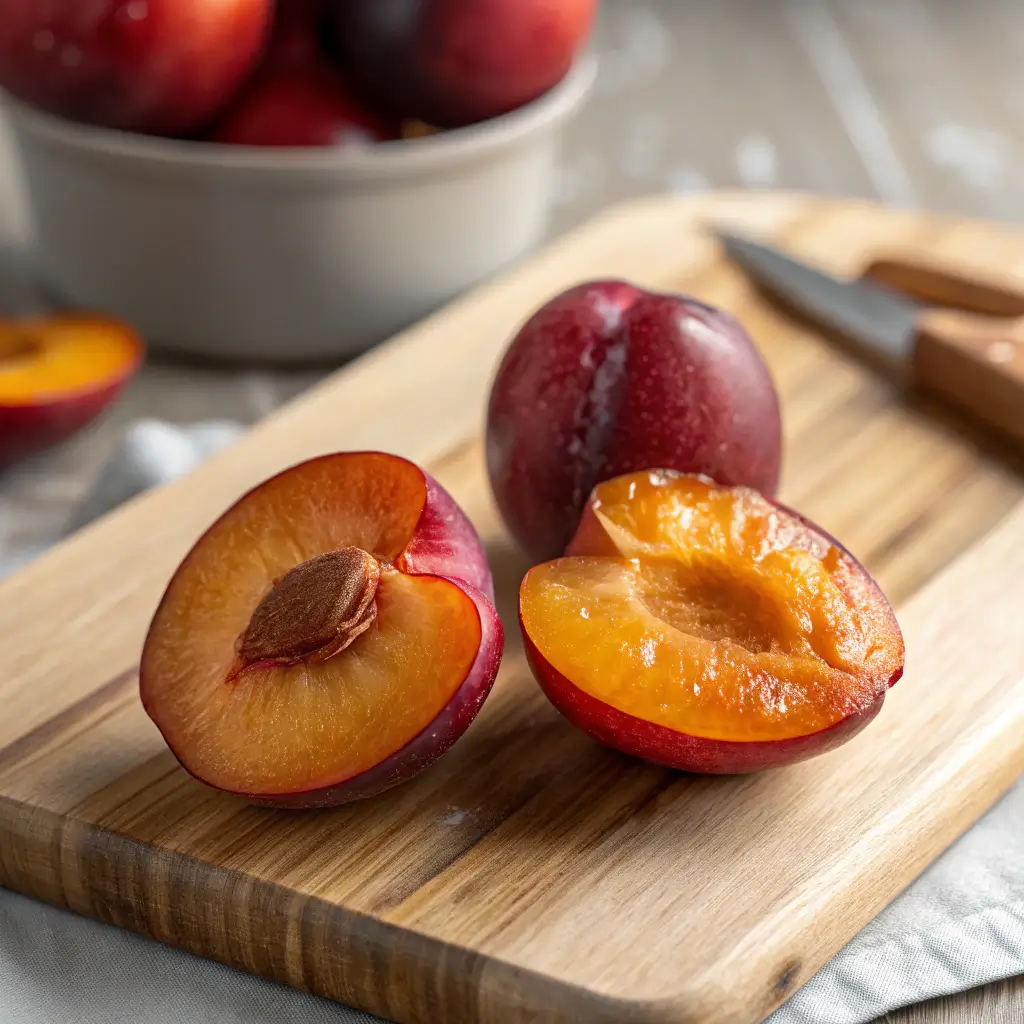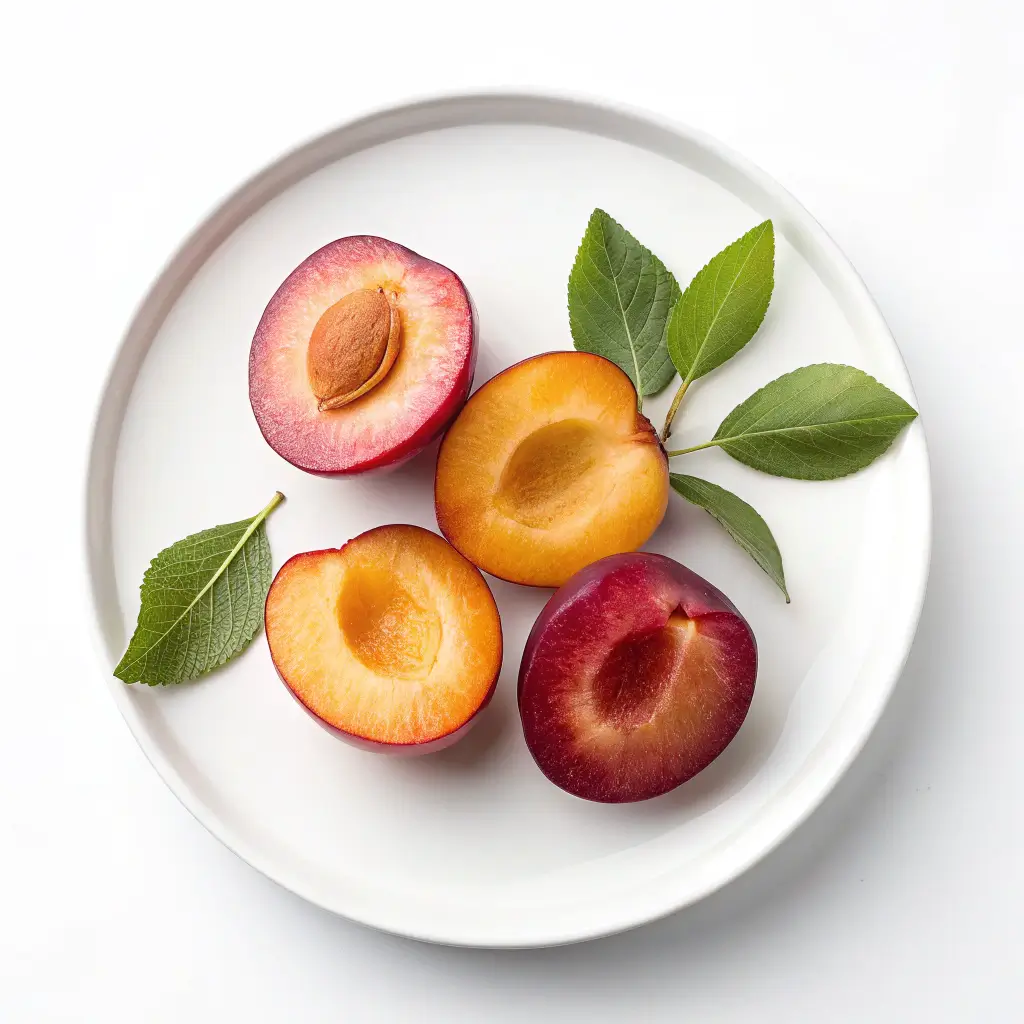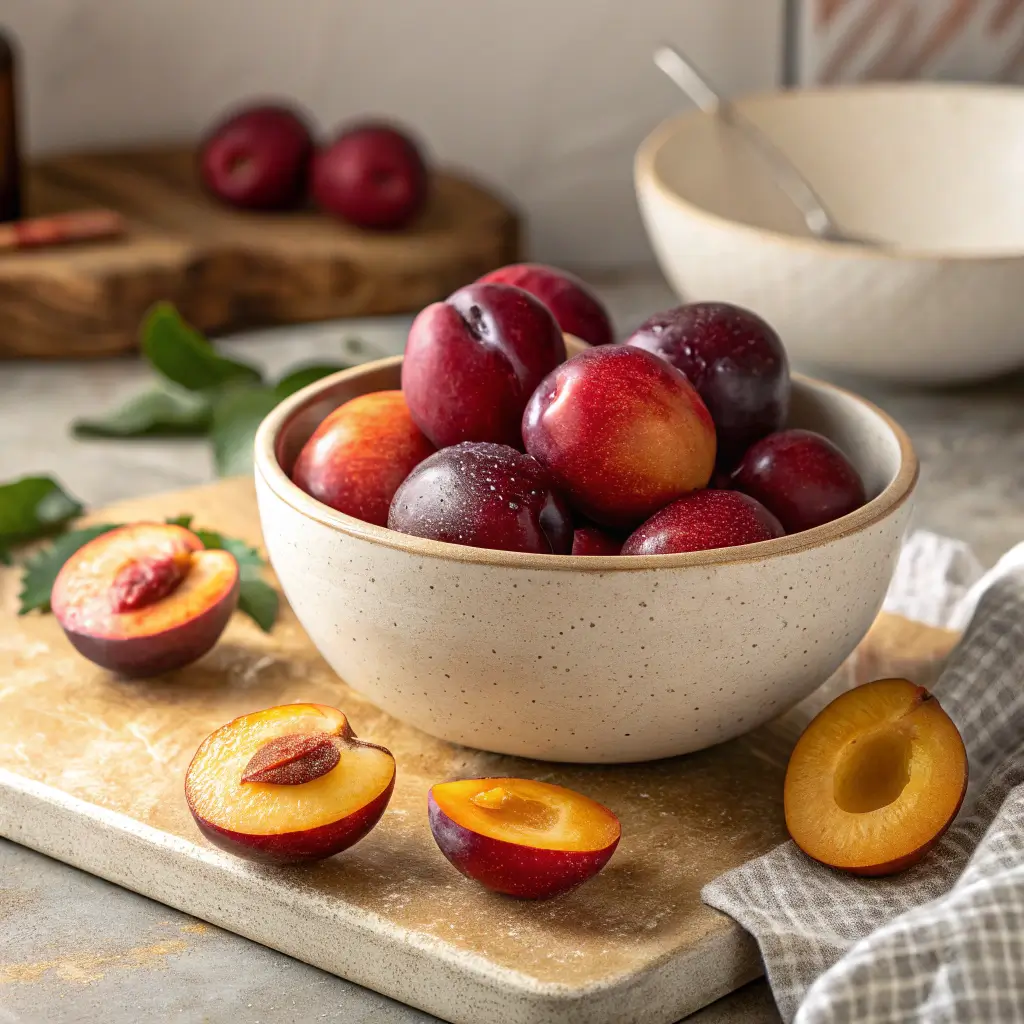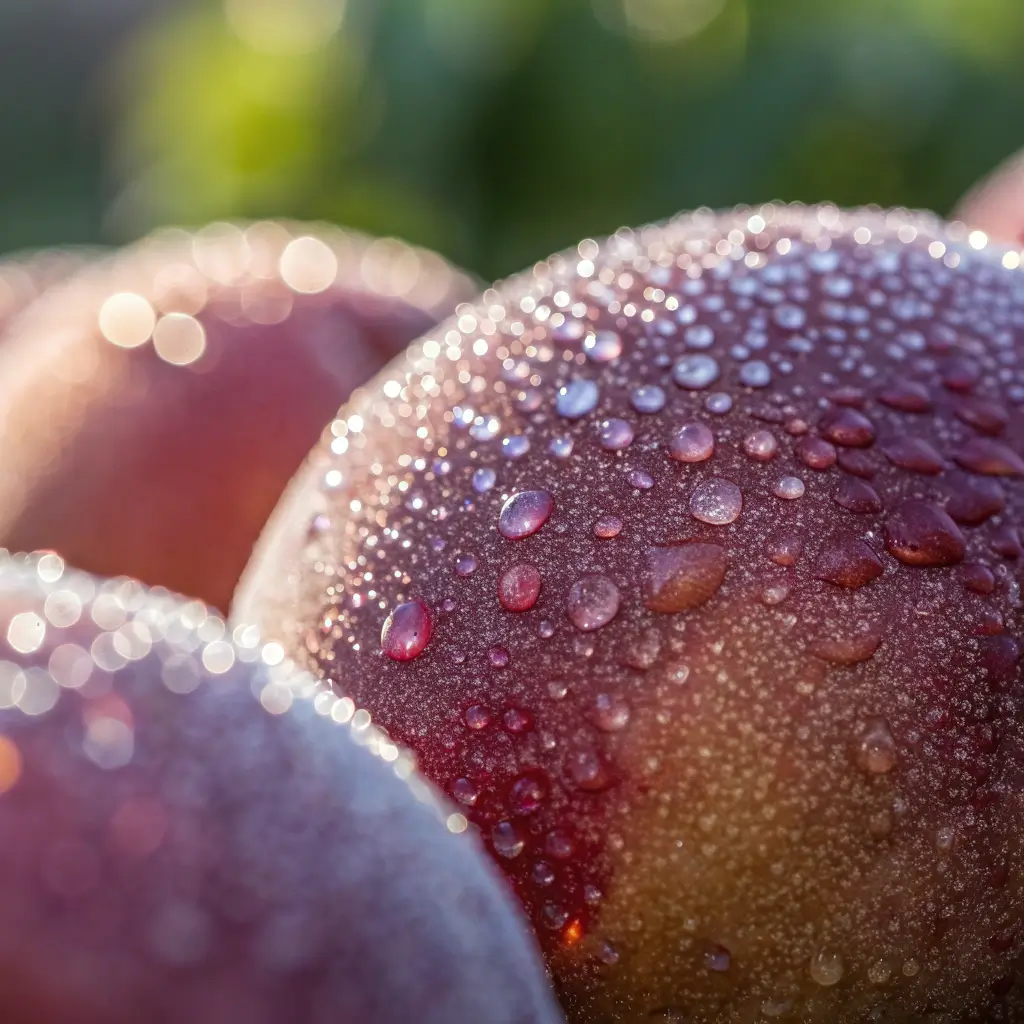Plumcots, a wonderful hybrid fruit that is an exceptional combination of apricots and plums. The vibrant hues, the soft texture, and smooth sweet-tart taste make the plumcots an absolute favorite with people who love food and are health conscious. They can be used to add a splash of freshness to salads, or creating delicious and tasty desserts, they are the ability to be a diverse addition to your cooking. In this article, we’ll examine their unique flavor as well as their nutritional value and what makes them stand out from the other pluots-like fruits. Let’s explore the realm of plumcots to find out what makes them unique.
Table of Contents
What Does a Plumcot Taste Like?
Plumcot Flavor Profile
They have a distinctive flavor that is a blend of the sweet ripe plums and the tartness of the apricots. A balanced flavor, which makes plums a great option for fresh consumption as well as culinary uses. They have a smooth texture and juicy, with flesh that is soft but firm enough to cut neatly.
As an example, a matured fruit is bursting in sweetness while the ones that are little underripe give a tart taste that refreshes the taste buds. The variety of flavors is why they are suitable for many different food items and snack items.
How Plumcots Enhance Recipes
Plumcots aren’t just to be eaten raw, they excel in a variety of recipes. Their sweet, tangy flavour enhances sweet and savory food items. When it comes to desserts, this fruit provide the depth and richness of desserts, whether made into pie crusts and blended into smoothies or caramelized to make a delicious topping to Ice cream. In savory dishes fruits are great with protein such as chicken and pork. They can be used as a sweet glaze or an tangy accompaniment.
You can, for instance, change the fruits and peaches to peaches to make your own favorite cobbler recipe for example, such as this wonderful Peach Cobbler Cake Mix recipe. It’s a delicious dish that’s fresher and with a sharper edge, which is ideal to serve at summer parties.
Are Plumcots Healthy for You?
Nutritional Profile of Plumcots
With essential nutrients, this fruit can be an incredible source of health benefits. They’re high in Vitamin C and help improve your immunity and maintains your skin’s health. In addition, their potassium levels aid in maintaining the health of your heart by helping to maintain good blood pressure. They are also a great source of fiber-rich food helping digestion and keeping your fuller for throughout the day.
| Nutrient | Amount (Per 100g) | Health Benefit |
|---|---|---|
| Vitamin C | 15 mg | Enhances immunity and skin health |
| Potassium | 190 mg | Regulates blood pressure |
| Fiber | 2 g | Aids digestion |
| Antioxidants | High | Fights free radicals |

Health Benefits of Eating Plumcots
Consuming a lot of fruits can increase your overall general health. Here are a few benefits that they bring:
- High in antioxidants: The plucots contain anthocyanins and beta-carotene, two substances that protect your body against oxidative stress as well as inflammation.
- Improves the health of your digestive system: Their high fiber content can help maintain an ideal digestive system and helping to prevent constipation-related issues.
- supports weight management: Due to their low calorie count and naturally sweet, can be a fantastic snack option for people looking to reduce their weight.
- improves the health of your skin: The antioxidants and Vitamin C that are found can contribute to more radiant, healthier skin, by promoting the production of collagen.
In order to reap the maximum benefit from these advantages, you should consider adding to your diet. They’re for instance, great with recipes like this delicious Chicken Bacon Ranch Pizza which is where their tart sweetness is a perfect match for the richness of bacon and cheese.
What’s the Difference Between a Plumcot and a Pluot?

Plumcot vs. Pluot: A Detailed Comparison
While plumcots and pluots may be very similar, they’re two distinct fruit with distinctive characteristics. The furuits are a 50/50 mix of plums, the apricots. While pluots tend to be mostly plum dominant, containing around 75 percent plums and 25 percent apricot genetics. The difference is significant in their taste, texture as well as their use in cooking.
| Feature | Plumcot | Pluot |
|---|---|---|
| Genetic Makeup | 50% plum, 50% apricot | 75% plum, 25% apricot |
| Flavor Profile | Balanced sweet and tangy | Sweeter, less tangy |
| Skin Texture | Thin and smooth | Glossy with a slightly thicker skin |
| Uses | Versatile in sweet and savory | Best in sweet dishes |
Which One Should You Choose?
The decision between plumcots and pluots will depend upon your preferences in terms of taste and what you’re making. They’re balanced in taste, are perfect for eating fresh, fruit salads or the perfect addition to spicy dishes. In contrast the pluots are sweeter and more tangy, work better for jams and desserts.

Dynamic Additions: Fun Facts and Storage Tips
Fun Facts:
The plucots aren’t only an enjoyable treat for palate; their story and production are also fascinating. Below are some fascinating information to learn:
- The historical roots: While might seem to be an innovation that is recent but their origins are traced to the horticulturist, Luther Burbank at the end of 19th century. He pioneered the hybridization process of the two fruits, establishing the scene for modern variety.
- The HTML0 Kaleidoscope of Colors this fruit can be found in many shades, ranging from golden yellow to deep violet. Every color has subtle variations in texture and flavor, which makes them visually striking as they taste.
- Flexibility in the kitchen: This hybrid fruit is perfect for desserts and meals. The flexibility of the fruit allows it to improve salads, desserts, as well as grilled meats.

Common Mistakes When Choosing or Storing Plumcots
In order to fully appreciate you must know the best way to store and select the right way. Here are a few tips to steer clear of the most common errors:
- Overlooking Ripeness Be sure to select which are able to yield slightly when pressure is applied. Fruits that are hard and ripe could have a lack of flavor. Likewise, overly soft fruit may be overripe.
- Unconscious of Color Variations The exterior of a mature may be yellow, purple, or red. Being aware of these subtle differences can aid you in selecting the most suitable one.
- Unsafe storage: Keep unripe stored in a cool, dry place away from the direct light. When they’re ripe, store them in a refrigerator in order to extend the shelf life by several days.
Following these guidelines will ensure that your stay delicious and tasty, regardless of whether you consume them raw or use them in dishes.
FAQs About Plumcots
What Does a Taste Like?
The flavor is a ideal blend of tart and sweet flavors. The taste can vary from slightly tart to sweet dependent on the ripeness and the variety.
Are Plumcots Healthy for You?
Yes! this fruit is high in Vitamin C as well as potassium as well as dietary fiber. These vitamins boost immunity, boost cardiovascular health and enhance digestion.
What’s the Difference Between a Plumcot and a Pluot?
Their differences lie in the genetic makeup of their species. This fruit have an even mix of apricots and the plums (50/50) but pluots tend to be plums (75 percent) but with less influence of apricots. It gives them a sweeter flavor compared to the more tangy plumcots.
Is a Plumcot Genetically Modified?
They are not made by traditional hybridization which is a natural process that involves the cross-pollination process of apricots with plums. They’re not genetically created.
How Can You Tell When a Plumcot is Ripe?
The Fruit is relatively soft and have a sweet fragrance of fruits. The skin can appear less shiny as it matures.
Can Plumcots Be Frozen for Later Use?
Yes! Cut the fruit in half, take out the pits, then place them inside a airtight container prior to freezing. The fruits can later be used as a sauce, smoothie or baked items.
Pro Tips and Variations
Creative Ways to Use Plumcots
The plucots can be used in a variety of ways. Here are some innovative ways to include them in your food:
- Grilled Split the plumcots in half, take out the pits, then grill them gently. Serve them as warm desserts served with honey drizzled over them or serve as a garnish for barbecued meats.
- Plumcot Salsa Chop up, and mix them in with the red onion, cilantro lime juice as well as a little salt. This refreshing salsa is great with fish tacos, or grills.
Recipe Variations
Are you looking for ideas? This is how could transform the most popular recipe:
- Plumcot Cobbler: Make use cut into slices in the recipe you prefer for a cobbler that you like, such as the Peach Cobbler Cake Mix. Their tart flavor is a delicious flavor.
- Savory Glaze Purée plumcots using some balsamic vinegar, honey and. Make this glaze for roasting pork or chicken for the perfect sweet, tart flavor.

Conclusion
The fruit which combines all the great qualities of the apricots and plums. The balanced taste as well as their nutritional value and their flexibility in the kitchen makes them an essential ingredient for health-conscious foodies and foodie consumers alike. When eaten fresh, baked or used in an savory meal the fruit add an unique appeal to every recipe. You can try them out in your favourite meals, or try different ideas, such as the ones in this tutorial on Easy Gluten Free Desserts.
